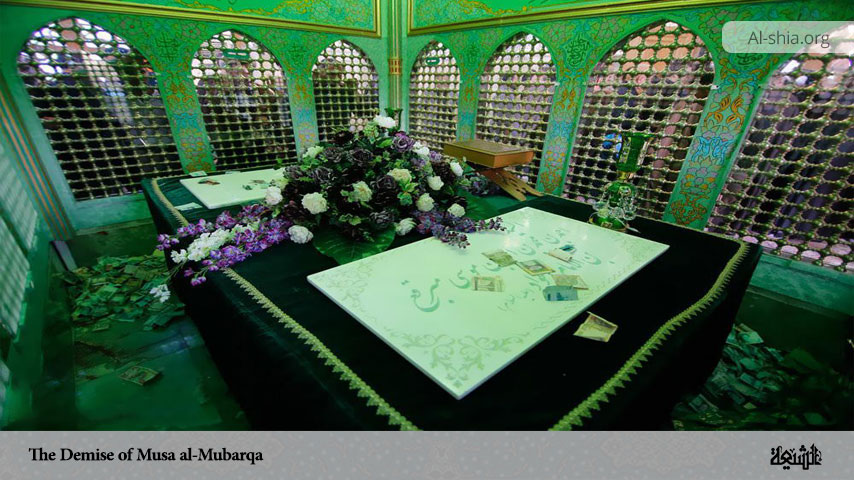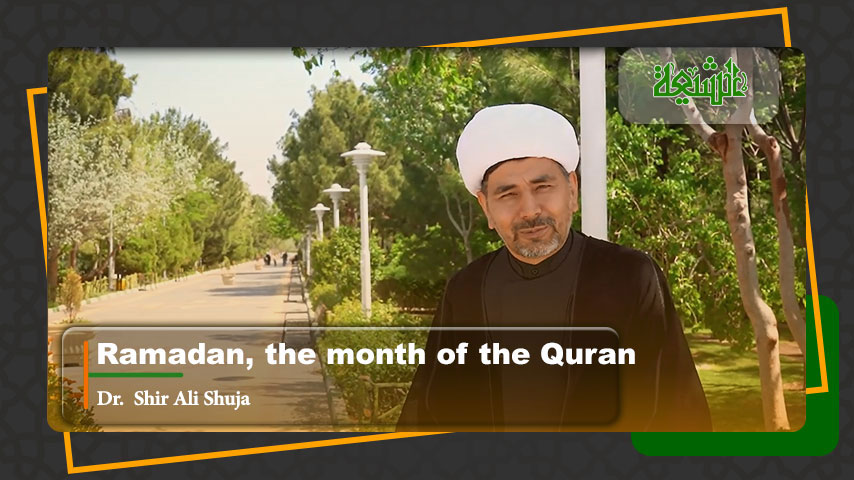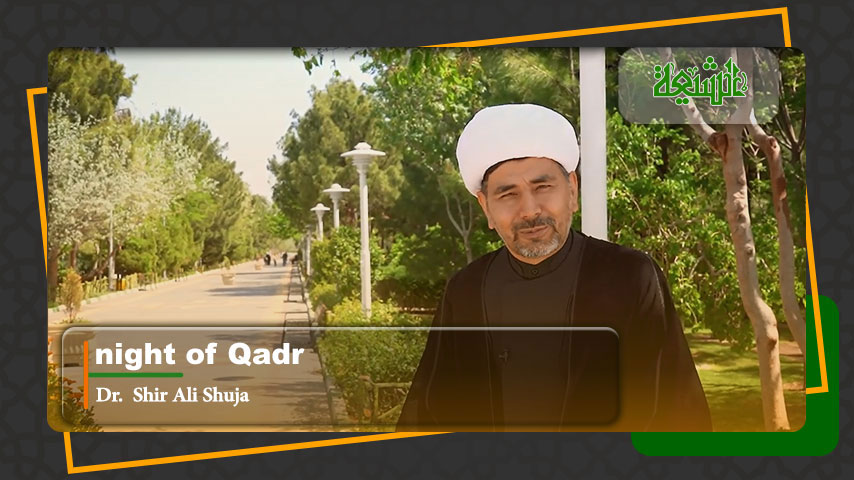Musa al-Mubarqa (d. 296/909) was one of the descendants of the Prophet’s Household (Ahl al-Bayt) through the lineages of Imam Husain ibn Ali (peace be upon them). He is known to be a common ancestor of most of the Ridawi sayyids, who descended from the Prophet Muhammad (peace be upon him and his family) through Ali al-Rida (d. 818), the eighth Imam in Twelver Shia. Most of them were found in Sabzevar, Iran earlier before they migrated to countries such as India, Pakistan, Afghanistan, Iraq, and Syria.
His Birth and Lineage
Musa al-Mubarqa was born in Medina in 214/829-30 and he stayed until his father was martyred. His father was the ninth Imam of Shi’a; Imam Muhammad al-Jawad (peace be upon him) and his mother was Samana al-Maghribiyya. She was also the mother of Imam al-Hadi (peace be upon him). Musa was the younger brother of Imam al-Hadi who succeeded their father, Imam al-Jawad (peace be upon him) as the tenth Imam of Shi’a.
Musa had two or four sisters, named variously in the sources. The Twelver theologian Sheilk al-Mufid (d. 1022) names them as Fatima and Amama, while the biographical source Dala’il al-imama lists them as Khadija, Hakima, and Umm Kulthum. The Sunni historian Fakhr Razi (d. 1209) adds Behjat and Barihe to these names, saying that none of them left any descendants.
According to a report, Musa Mubarqa had five sons: Husain, Ali, Ahmad, Muhammad, and Ja’far. Ahmad ibn Musa Mubarqa had three sons: Ubaidullah, Abu Jafar Muhammad Araj and Abu Hamza Ja’far. The author of the book titled “Ummada Talib” said that the descendants of Musa al-Mubarqa are from his son Ahmad ibn Musa, and the descendants of Ahmad are from his son Muhammad Araj.
His title and teknonyms
Musa was known by the title al-Mubarqa’ which literally means “covered” and he was called so because he used to cover his face with a veil (Burqa’ in Arabic) to remain anonymous in public. His teknonyms were Abu Muhammad and Abu Ja’far.
His Qualities
Musa was similar to his mother in temperament. There is nothing in the sources about his level of knowledge, but from the questions that Yahya ibn Aktham, the judge of Mamun, asked him, it is clear that he was familiar with religious and jurisprudential rulings.
He was a prominent scholar and hadith narrator. Al-Shaykh al-Tusi in his Tahdhib al-ahkam, [Ṭūsī, Tahdhīb al-aḥkām, vol. 9, p. 355] Al-Shaykh al-Mufid in his Al-Ikhtisas, [ Mufīd, al-Ikhtiṣāṣ, p. 91], Ibn Shu’ba al-Harrani in his famous book Tuhaf al-‘Uqul [Ḥarrānī, Tuḥaf al-ʿuqūl ʿan Āl al-Rasūl, p. 476.] and al-Kulayni in his Al-Kafi mentioned some of the traditions narrated by Musa.
His Childhood
Musa was a small child when his father al-Jawad died in 835 CE at the age of about twenty-five, probably poisoned at the instigation of the Abbasid caliph al-Mu’tasim (r. 833–842).
The last will of Imam al-Jawad (PBUH) stipulated that his elder son Ali al-Hadi (PBUH) was the succeeding Imam after him and the one to be responsible for his younger brother Musa and his sisters. There was also an oral designation (nass) of Ali as the next Imam, delivered to a close confidant by al-Jawad. After his death, this testimony was corroborated by a small assembly of Shia notables, and the majority of his followers thus accepted the imamate of Ali, who is commonly known by the titles al-Hadi (lit. ’the guide’) and al-Naqi (lit. ’the distinguished’). However, a small group also gathered around Musa but soon returned to his brother Ali after the former dissociated himself from them.
After the martyrdom of his brother Imam Hadi (peace be upon him) in Samarra in 254 A.H, he stayed in Madina for a while and migrated to Qom in 256 AH during the caliphate of Mahtadi Abbasi.
His Death
After forty years of living in the holy city of Qom, Musa Mubarqa finally Musa passed away in Rabi’ Thani 22, 296 (correspondent to January 18, 909 CE) in Qom. After the magnificent burial of his body, the ruler of Qom at the time, Abbas ibn Amr Ghanwi, prayed over his body and was buried in a house known as the house of Muhammad ibn Al-Hasan ibn Abi Khalid Al-Ash’ari. His burial place is now known in Qom and it is the place of worship of believers. The construction of his current shrine was sponsored by the Safavid king Tahmasp I (r. 1524–1576).
















